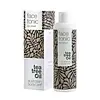What's inside
What's inside
 Key Ingredients
Key Ingredients

 Benefits
Benefits

 Concerns
Concerns

 Ingredients Side-by-side
Ingredients Side-by-side

Water
Skin ConditioningTriethanolamine
BufferingGlycolic Acid
BufferingPEG-40 Hydrogenated Castor Oil
EmulsifyingPhenoxyethanol
PreservativeTrideceth-9
EmulsifyingNiacinamide
SmoothingParfum
MaskingEthylhexylglycerin
Skin ConditioningPropylene Glycol
HumectantPolysorbate 20
EmulsifyingTocopheryl Acetate
AntioxidantUlva Lactuca Extract
Skin ConditioningGlycerin
HumectantGlycyrrhiza Glabra Root Extract
BleachingPotassium Sorbate
PreservativeSodium Benzoate
MaskingWater
Skin ConditioningPEG-40 Hydrogenated Castor Oil
EmulsifyingPEG-7 Glyceryl Cocoate
EmulsifyingGlycerin
HumectantTriethyl Citrate
MaskingSaccharide Isomerate
HumectantPhenoxyethanol
PreservativeMelaleuca Alternifolia Leaf Oil
AntioxidantSodium PCA
HumectantAllantoin
Skin ConditioningPotassium Sorbate
PreservativeSodium Benzoate
MaskingLactic Acid
BufferingTocopherol
AntioxidantTerminalia Ferdinandiana Fruit Extract
AntioxidantCitric Acid
BufferingSodium Citrate
BufferingLimonene
PerfumingWater, PEG-40 Hydrogenated Castor Oil, PEG-7 Glyceryl Cocoate, Glycerin, Triethyl Citrate, Saccharide Isomerate, Phenoxyethanol, Melaleuca Alternifolia Leaf Oil, Sodium PCA, Allantoin, Potassium Sorbate, Sodium Benzoate, Lactic Acid, Tocopherol, Terminalia Ferdinandiana Fruit Extract, Citric Acid, Sodium Citrate, Limonene
 Reviews
Reviews

Ingredients Explained
These ingredients are found in both products.
Ingredients higher up in an ingredient list are typically present in a larger amount.
Glycerin is already naturally found in your skin. It helps moisturize and protect your skin.
A study from 2016 found glycerin to be more effective as a humectant than AHAs and hyaluronic acid.
As a humectant, it helps the skin stay hydrated by pulling moisture to your skin. The low molecular weight of glycerin allows it to pull moisture into the deeper layers of your skin.
Hydrated skin improves your skin barrier; Your skin barrier helps protect against irritants and bacteria.
Glycerin has also been found to have antimicrobial and antiviral properties. Due to these properties, glycerin is often used in wound and burn treatments.
In cosmetics, glycerin is usually derived from plants such as soybean or palm. However, it can also be sourced from animals, such as tallow or animal fat.
This ingredient is organic, colorless, odorless, and non-toxic.
Glycerin is the name for this ingredient in American English. British English uses Glycerol/Glycerine.
Learn more about GlycerinPeg-40 Hydrogenated Castor Oil is derived from castor oil and polyethylene glycol (PEG). It is used as a emollient and emulsifier.
As an emulsifier, it helps prevent ingredients from separating. It also helps make the other ingredients more soluble; it is often used to solubilize fragrances. This increases spreadability and elongates shelf life in a product.
Emollients help soothe and soften the skin. They do this by creating a protective film on your skin. This barrier helps trap moisture and keeps your skin hydrated. Emollients may be effective at treating dry or itchy skin.
This ingredient may or may not be vegan, depending on the source.
Peg-40 Hydrogenated Castor Oil may not be fungal-acne safe. We recommend speaking with a professional if you have any questions or concerns.
Learn more about PEG-40 Hydrogenated Castor OilPhenoxyethanol is a preservative that has germicide, antimicrobial, and aromatic properties. Studies show that phenoxyethanol can prevent microbial growth. By itself, it has a scent that is similar to that of a rose.
It's often used in formulations along with Caprylyl Glycol to preserve the shelf life of products.
Potassium Sorbate is a preservative used to prevent yeast and mold in products. It is commonly found in both cosmetic and food products.
This ingredient comes from potassium salt derived from sorbic acid. Sorbic acid is a natural antibiotic and effective against fungus.
Both potassium sorbate and sorbic acid can be found in baked goods, cheeses, dried meats, dried fruit, ice cream, pickles, wine, yogurt, and more.
You'll often find this ingredient used with other preservatives.
Learn more about Potassium SorbateSodium Benzoate is a preservative. It's used in both cosmetic and food products to inhibit the growth of mold and bacteria. It is typically produced synthetically.
Both the US FDA and EU Health Committee have approved the use of sodium benzoate. In the US, levels of 0.1% (of the total product) are allowed.
Sodium benzoate works as a preservative by inhibiting the growth of bacteria inside of cells. It prevents the cell from fermenting a type of sugar using an enzyme called phosphofructokinase.
It is the salt of benzoic acid. Foods containing sodium benzoate include soda, salad dressings, condiments, fruit juices, wines, and snack foods.
Studies for using ascorbic acid and sodium benzoate in cosmetics are lacking, especially in skincare routines with multiple steps.
We always recommend speaking with a professional, such as a dermatologist, if you have any concerns.
Learn more about Sodium BenzoateWater. It's the most common cosmetic ingredient of all. You'll usually see it at the top of ingredient lists, meaning that it makes up the largest part of the product.
So why is it so popular? Water most often acts as a solvent - this means that it helps dissolve other ingredients into the formulation.
You'll also recognize water as that liquid we all need to stay alive. If you see this, drink a glass of water. Stay hydrated!
Learn more about Water